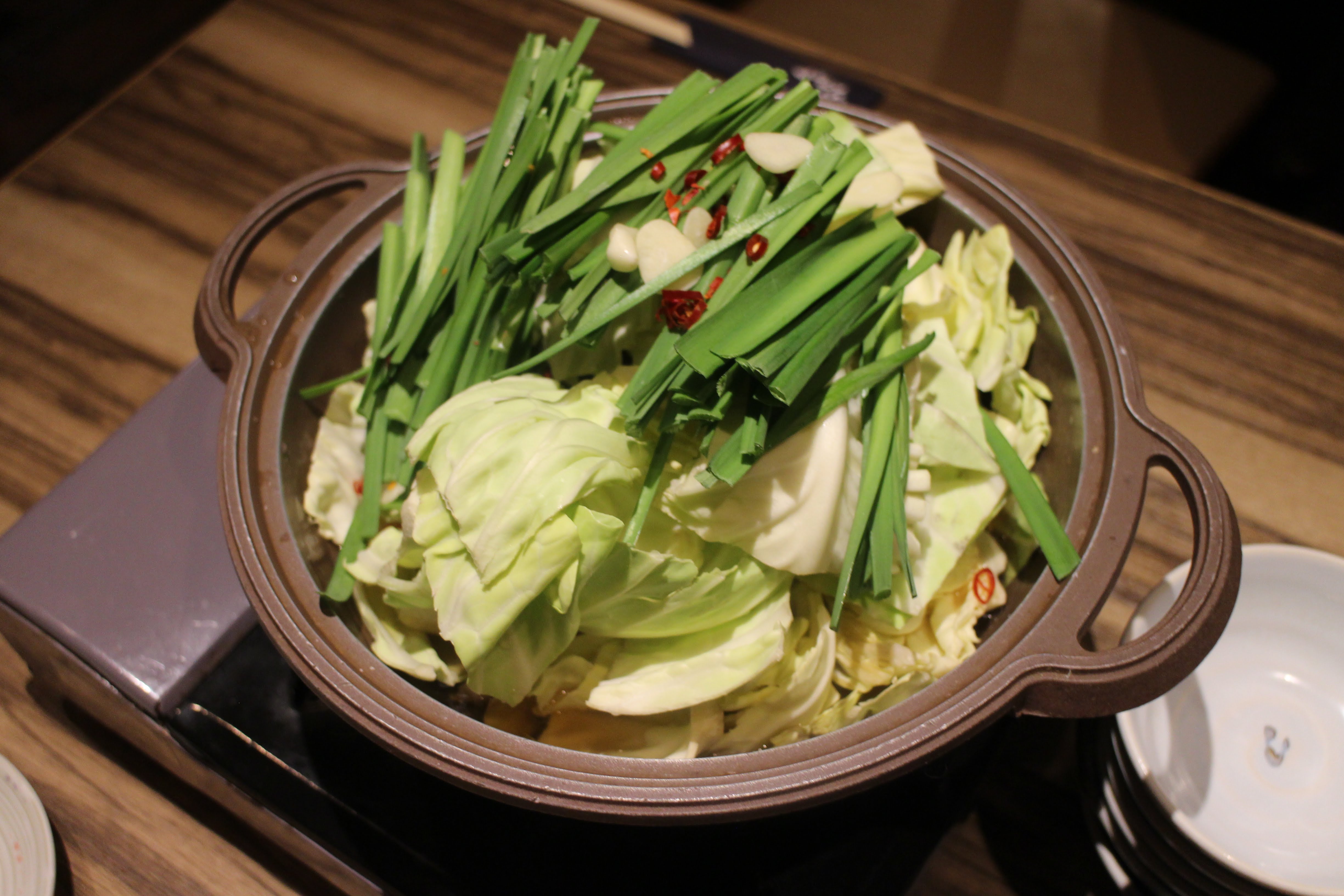Japanese Hot Pot on Parade: From Chanko Nabe to Kiritanpo


Nabemono, also known as nabe, is a traditional Japanese hot pot meal of meat, seafood, or tofu vegetables cooked together in an earthenware pot. It has been eaten in Japan since earthenware dishes first started being used over a thousand years ago. Early nabe included only fish and vegetables due to Japan’s traditional Buddhist culture, which prohibited eating meat. However, Western influence meant that beef, chicken, and pork also came to be eaten beginning in the Edo period.
Nabe can be enjoyed year-round, and is commonly served at restaurants like izakaya and other Japanese eateries with an emphasis on group dining. It is also popular as a home-cooked family meal, especially during the autumn and winter when family and friends frequently gather around a heated kotatsu table for nabe parties.
History of Nabe Cuisine
Long ago, a sunken fireplace called an “irori” was at the center of Japanese homes. Families would place a cast iron hot pot above the fire to cook their food, eating from the pot while periodically adding new ingredients. This is thought to be where hot pot cuisine first originated.
time passed and kitchens were added to the home, irori fireplaces largely disappeared, replaced with more simple shichirin clay charcoal stoves. Today a simple portable burner is often used for table-top cooking.
How to Eat Japanese Hot Pots
Occasionally, small hot pots are used for individual diners, but generally one large pot is used, shared between diners sitting around a table, meaning nabe is considered a very social meal in Japan.
A large pair of chopsticks is used to transport food from the hot pot to individual dishes, and smaller chopsticks are used for eating.
Nabe is quite rich and flavourful, so not usually served with many condiments, and these are added to individual dishes. Of the condiments that may be served, ponzu is one of the most common, a sweet and sour dressing made of of citrus and soy sauce.
Once all the ingredients have been eaten from the hotpot, a flavorful broth remains. Some people like to add rice or noodles to this broth to finish the meal.
11 Types of Lip-Smacking Nabe Dishes
There are many different kinds of nabe, including special regional variations made with local ingredients.
Chanko Nabe
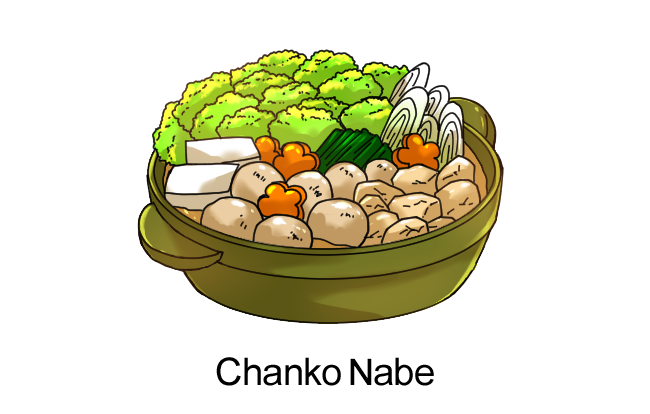
Chanko nabe is a type of Japanese hot pot eaten by sumo wrestlers. It features plenty of protein with chicken, fish, and tofu along with lots of vegetables, all together in one huge nabe dish. Professional sumo wrestlers live and train together in a team called a “stable,” and each stable has its own proprietary recipe for chanko nabe to help its wrestlers put on the massive bulk they need to be competitive. The sumo wrestlers eat together around a big communal nabe pot and enjoy their chanko nabe with plenty of rice, beer and even wine. After retiring from the sport, it’s not uncommon for a sumo wrestler to go on to open his own chanko nabe restaurant.
Kimchi Nabe
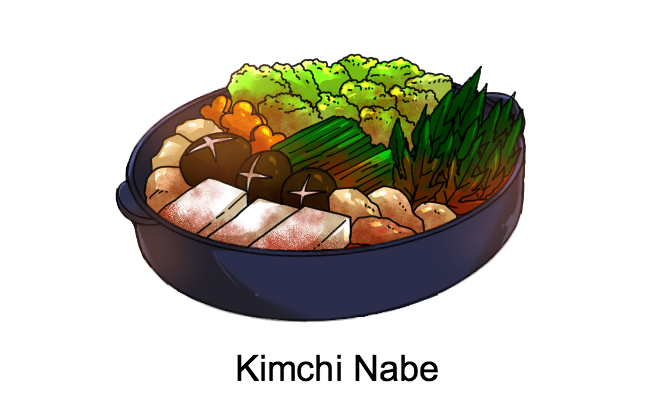
The Japanese hot pot style known as kimchi nabe is based on the Korean dish kimchi jjigae, a stew made with kimchi, pork or seafood, tofu, and vegetables. It became popular in Japan following the “Korean boom” when Korean dramas were played on Japanese television, and viewers in Japan saw characters on TV eating the dish. Before long the Japanese version, kimchi nabe, was a staple in a Japan. Although not as spicy as kimchi jjigae, kimchi nabe features similar ingredients such as pork belly, tofu, scallions, and bean sprouts in a kimchi-based broth.
Dotenabe
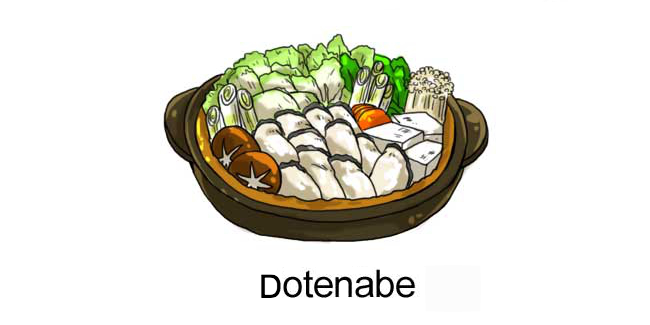
Oysters are a famous seafood product of the Seto Inland Sea, and Hiroshima prefecture, which borders on it, is the leading producer of oysters in Japan. One excellent way to enjoy the local oysters is in a miso and oyster nabe called “kaki no dotenabe”. Thick, juicy Hiroshima oysters are simmered with broiled tofu and vegetables in an earthenware pot lined with sweet miso, which can be added to the broth along with fresh squeezed lemon to adjust the flavor.
Anko Nabe
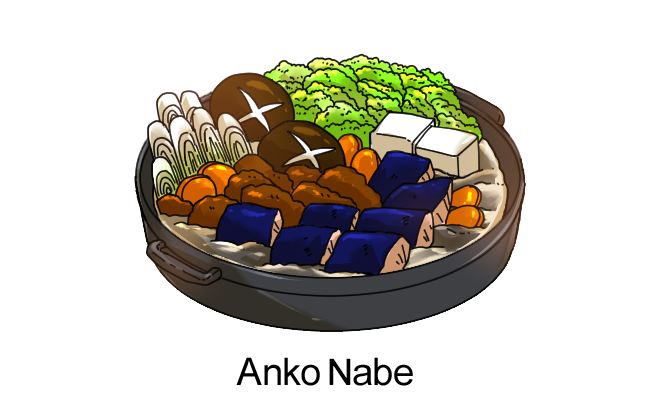
Anko nabe is a specialty hot pot from Ibaraki prefecture in the eastern Kanto region of Japan. It’s made with a rare deep-sea fish called anko (known as anglerfish or monkfish in English), which must be eaten extremely fresh. In Ibaraki prefecture, which is famous for its coastal anko fishing, anko nabe is a winter delicacy made with the skin and organs of the anglerfish and lots of vegetables.
Fugu Nabe (Tecchiri Nabe)
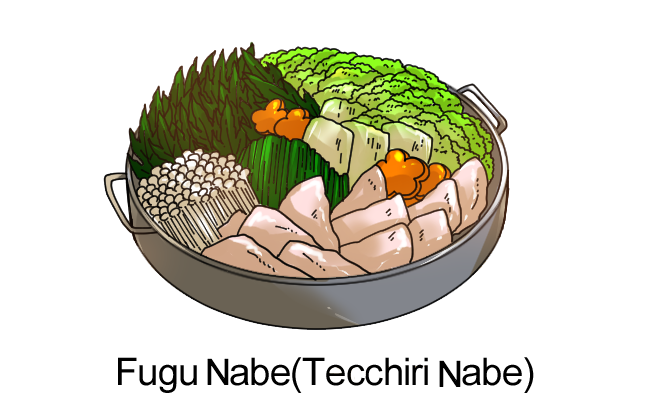
Fugu nabe, also known as “tecchiri nabe”, is the Kansai region’s answer to anko nabe. This Japanese hot pot is made with one of the most daring culinary ingredients on the planet, the poisonous fugu (pufferfish), a huge delicacy in Japan which can only be prepared by a specially trained and licensed chef. In tecchiri nabe, a specialty of Yamaguchi prefecture, fugu is simmeredwith vegetables in a steaming broth, with rice and egg added at the very end to make a flavorful porridge.
Yosenabe

Yosenabe is one of the most versatile kinds of nabe, with a name that means “anything goes,” and it can be made with any combination of meat or vegetables on hand. The dish starts with a simple miso or soy sauce broth to which seafood such as prawns or clams is added, along with vegetables like cabbage, leek, and mushrooms--or whatever you happen to have around!
Motsunabe

Motsunabe is a hot pot made with beef or pork tripe that originated in the Fukuoka area but is enjoyed all across Japan. The giblets are thoroughly cleaned and blanched before cooking to ensure the best possible flavor of the meat; after that, the motsu is then simmered in a boldly flavored broth that holds up well with the flavor of the meat, such as miso broth or soy sauce broth flavored with garlic and chili pepper.
Mizutaki
Mizutaki, or chicken broth nabe, is another style of Japanese hot pot that originated from the Fukuoka area. It features a silken broth made by simmering native Kyushu jidori chicken for hours, along with other local ingredients such as Hakata green onions. The flavor is so insatiably good that locals in Fukuoka are not content to eat it only during the winter, instead serving it year round.
Kani Nabe
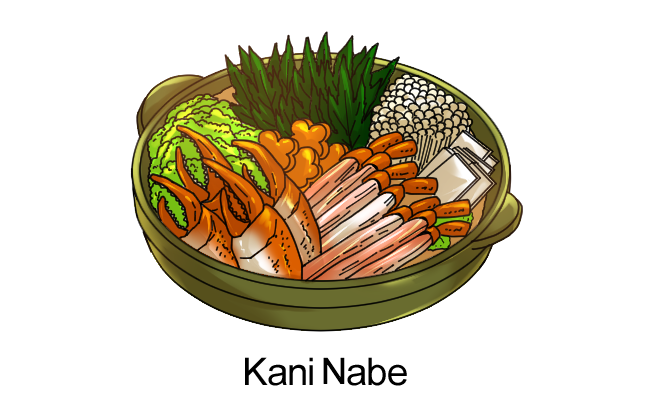
Some Japanese hot pots are especially perfect for the colder months--Kani nabe, made with fresh crab poached in a konbu seaweed broth with winter vegetables, is one of these. As the crab simmers, everything in the dish takes on a heavenly seafood flavor. After the vegetables and crab meat have all been consumed, many people throw some cooked rice and beaten egg into the broth to make a delicious porridge called kani zosui.
Kamo Nabe
Kamo nabe is a specialty hot pot of wild duck from the Kohoku region in Shiga prefecture. It’s made using waterfowl that migrate to the northern shore of Lake Biwa from Siberia and become fatty as the weather gets colder. Duck fat has a natural sweetness that differs from other kinds of animal fat and imparts a special flavor to the broth, along with tofu, leeks, and Chinese cabbage.
Kiritanpo Nabe
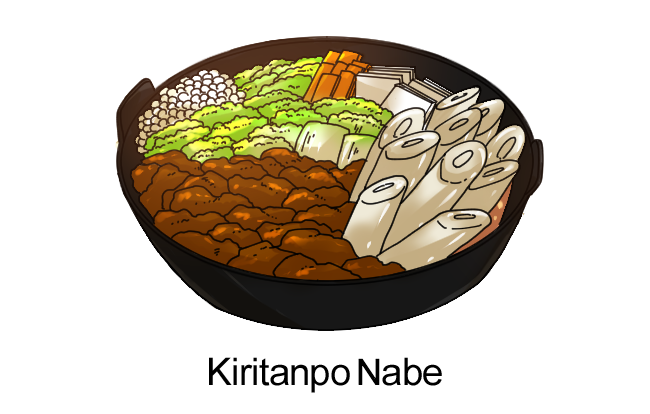
Kiritanpo nabe hails from Akita prefecture. It contains a grilled rice cake called “kiritanpo” that’s made by pounding boiled rice and molding it into a cylindrical shape, then roasting it on skewers around an open fire. The toasted kiritanpo cakes are cut into smaller pieces and simmered with hinai-jidori chicken, a type of chicken native to the Akita region, and local mountain vegetables such as burdock root.
Ishikari Nabe (Salmon Miso)
Named after the Ishikari River in Hokkaido where salmon go to lay their eggs, this nabe features salmon as the main ingredient, and miso as the broth flavoring. Additionally, it may include tofu, vegetables like carrots, mushrooms, daikon and onion, and the stock may be seasoned with mirin, sake, butter, milk and sake kasu (lees). It may also be served with a decorative topping of ikura (salmon eggs). In Hokkaido, where winters are long and cold, hotpots are a way of keeping warm, and Ishikari nabe is particularly popular because of the nourishment from the protein provided by the salmon and tofu. Along with Genghis Khan, Ishikari nabe has become representative of Hokkaido cuisine.
‘Tis the Season for Japanese Hot Pot Dishes
Especially now that the days are growing cooler, nothing beats gathering with friends around a steaming pot of nabe for a warm, filling meal. You can fire up the stove at home—or check out Gurunavi nabe restaurant listings for the best places to try all kinds of Japanese hot pot dishes close to you!



